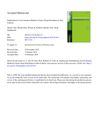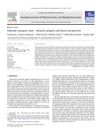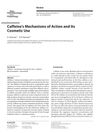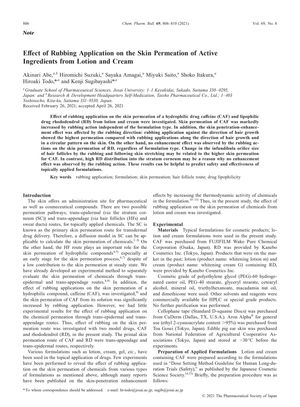TLDR Rubbing skin increases absorption of water-soluble drugs from lotions and creams, but not oil-soluble drugs.
The study examined how rubbing affects the absorption of caffeine (CAF), a hydrophilic drug, and rhododendrol (RD), a lipophilic drug, from lotions and creams into the skin. It was discovered that rubbing significantly increased the permeation of CAF into the skin for both types of formulations, especially when rubbed against hair growth direction. However, rubbing did not enhance the permeation of RD. The increase in CAF permeation may be due to the enlargement of hair follicle openings caused by rubbing, while RD's lack of enhancement could be attributed to its high distribution in the outer skin layer (stratum corneum). The study, which used porcine skin as a model and had an average sample size of three (n = 3), suggests that rubbing can influence the effectiveness of topical drug delivery, but more research is needed to understand the effects with different drugs and formulations.
 2 citations
,
August 2020 in “Chemical and Pharmaceutical Bulletin”
2 citations
,
August 2020 in “Chemical and Pharmaceutical Bulletin” Rubbing increases drug absorption through hair follicles.
 7 citations
,
February 2018 in “International Journal of Pharmaceutics”
7 citations
,
February 2018 in “International Journal of Pharmaceutics” Researchers developed a method to measure drugs in hair follicles and found that both water-loving and fat-loving drugs can be detected after being applied to the skin.
 39 citations
,
November 2016 in “Pharmaceutics”
39 citations
,
November 2016 in “Pharmaceutics” The hair follicle pathway significantly affects how easily water-loving chemicals pass through the skin.
 211 citations
,
February 2009 in “European journal of pharmaceutics and biopharmaceutics”
211 citations
,
February 2009 in “European journal of pharmaceutics and biopharmaceutics” Hair follicles help absorb and store topical compounds, aiding targeted drug delivery.
405 citations
,
January 2004 in “Journal of Investigative Dermatology” Hair follicle size and distribution vary significantly across different body sites.
 September 2018 in “Asian journal of pharmacy and pharmacology”
September 2018 in “Asian journal of pharmacy and pharmacology” Honey has many health benefits and is good for you.
 January 2025 in “Frontiers in Genetics”
January 2025 in “Frontiers in Genetics” Combining minoxidil and plant extracts improved hair growth in a boy with a rare genetic disorder.
 182 citations
,
December 2007 in “BJCP. British journal of clinical pharmacology/British journal of clinical pharmacology”
182 citations
,
December 2007 in “BJCP. British journal of clinical pharmacology/British journal of clinical pharmacology” Hair follicles significantly increase the speed and amount of caffeine absorbed through the skin.
 153 citations
,
October 2012 in “Skin Pharmacology and Physiology”
153 citations
,
October 2012 in “Skin Pharmacology and Physiology” Caffeine in cosmetics may reduce cellulite, protect skin, and stimulate hair growth, but more research is needed on its use and effects.
114 citations
,
January 2007 in “International Journal of Dermatology” Caffeine can stimulate hair growth and counteract testosterone's suppressive effects on hair follicles.








